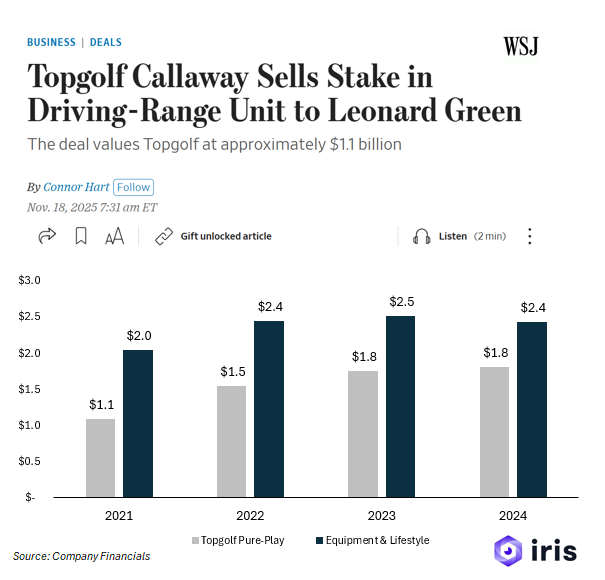🔑 A blockbuster acquisition that flopped in just 3 years
|
Welcome to The Business Buying Academy with Sieva Kozinsky. Here's what we have in store for you today:
🔑 This blockbuster acquisition flopped in just 4 years Name a better business to get into during the 1980s than movie theaters. It's tough to do. Think of all the blockbuster hits of the 90s: Jurassic Park. Titanic. Forrest Gump. Star Wars Episode 1. The Lion King. Friday night in the 90s meant going to the movies. Box office revenue soared. That's how Regal Cinemas went from a new business in 1989 to being acquired for $1.5 billion less than a decade later. Let's take a look at the acquisition, how it was structured, and how it ultimately turned out. Regal Cinemas began as a small regional movie theater chain in Tennessee. They began opening and acquiring theaters in 1989, with a focus on modern multiplexes featuring stadium seating and advanced amenities, a new trend at that time. By the mid-1990s, Regal became the second-largest movie theater operator in the U.S. with approximately 2,300 screens across 200 locations, mostly in the Southeast and Midwest. Regal is a successful example of rolling up independent and small regional chains to build a national brand. The company's success was fueled by the 1990s boom in movie theater attendance. But there was a downside to that trend: The industry became highly competitive, with chains competing for prime real estate and facing rising construction costs. The Acquisition On January 20, 1998, Regal Cinemas was acquired for approximately $1.5 billion, including assumed debt. The acquisition was led by two prominent leveraged buyout (LBO) firms: KKR and Hicks Muse
Key Terms
The transaction closed later in 1998, amid a wave of PE activity in entertainment. It was seen as a bet on sustained box office growth. Immediate Aftermath and Operations The new Regal entity expanded aggressively, adding hundreds of screens annually. By 2000, it operated over 6,000 screens, benefiting from hits like Titanic (1997) and the emerging sequel era. But their strategy involved heavy borrowing for construction, leading to a debt load exceeding $2 billion. Industry-wide overbuilding created cannibalization - too many theaters competing in the same markets - while attendance plateaued due to home video competition and economic slowdowns. Long-Term Outcomes and Bankruptcy The deal's leverage proved unsustainable. In October 2001, Regal filed for Chapter 11 bankruptcy with $1.9 billion in debt, amid a broader industry downturn that bankrupted several chains. KKR and Hicks Muse lost most of their $1 billion equity investment, marking a high-profile PE failure. Regal emerged from bankruptcy in 2002 after billionaire Philip Anschutz (through Anschutz Corporation) and Oaktree Capital Management acquired the business for about $200 million in a restructuring deal. They merged it with the bankrupt United Artists and Edwards Theatres to form Regal Entertainment Group (REG), which went public in 2002. Lessons
🔑 Roll-ups, Horizontal HoldCos, and SMB acquisitions My YouTube channel has a little bit of everything in the business buying world. I talked with a guy who owns 9 companies in totally different industries. And I also sat down with someone who rolled up multiple software companies in a very specific niche. Plus I have an interview with a business owner who bought a small flooring business and grew it organically before selling it. No matter what type of business you're looking to buy, I probably have a story for you. Check out the interviews below. Have a great day, Sieva P.S. - Are you hiring? Get started with top global talent from Somewhere (I'm a customer and investor) What did you think of today's newsletter? Rate this newsletter using the poll below: Disclaimer: nothing here is investment advice. Please do your own research. The information above is just for information and learning. |
Sieva Kozinsky
Learn how to buy businesses in 5-minutes or less, once a week. Lessons & specific tactics on how invest your money and generate cash flow for your life.
Welcome to The Business Buying Academy with Sieva Kozinsky. Here's what we have in store for you today: "Discount Jewelry" vs. "Affordable Luxury" - this simple rebrand made $182 million $1.1 billion PE acquisition I talked with 20+ business buyers - here's what they told me 🔑 This LBO netted $182 million in just 26 months When people talk about the golden age of private equity, the conversation usually jumps straight to KKR’s acquisition of RJR Nabisco. It's the most famous LBO ever. But...
Welcome to The Business Buying Academy with Sieva Kozinsky. Here's what we have in store for you today: How to rollup a boring industry Avoid this business buying mistake Buying $5 billion in real estate (here's how he did it) 🔑 Textbook M&A deal in a boring industry I usually write about historical M&A deals from decades past. This week, let's switch it up and talk about a recent deal in a boring industry: Industrial reliability services. You probably haven't heard of this business, so let's...
Welcome to The Business Buying Academy with Sieva Kozinsky. Here's what we have in store for you today: How MySpace went from $580 million to $12 billion, and then to zero Why private equity is eating at Denny's The best business buyers I know 🔑 They bought MySpace - and lost $545 million Imagine nailing a trend years ahead of time - but still losing over $500 million. That's what happened when legacy media giant News Corp acquired MySpace (anyone else remember setting their Top 8?) MySpace...
